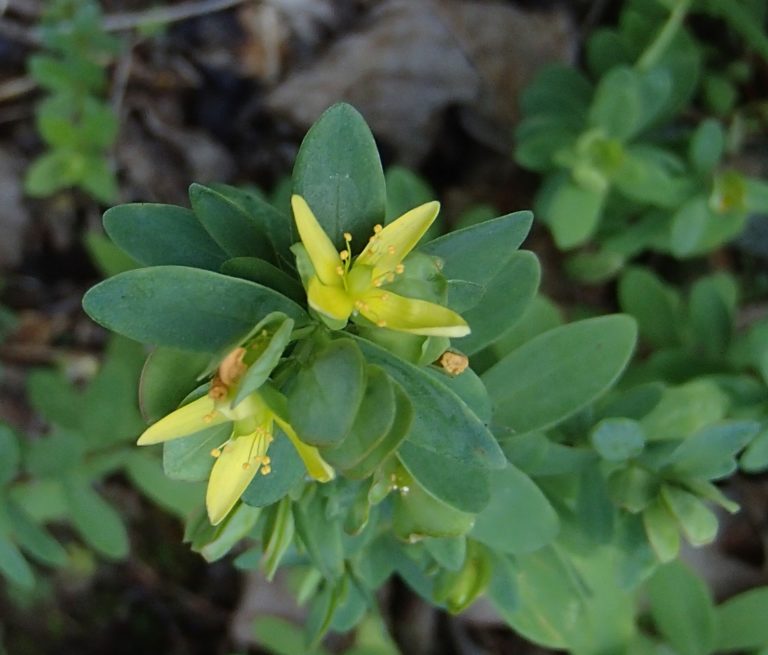In spite of its intimidating scientific appellation, St. Andrew’s Cross is a humble little “subshrub”, one that is not found elsewhere in the trade. It occurs in dry woods from Long Island south and over to Texas and Oklahoma. We are very fond of it as it volunteers along paths inside our deer fence in the central piedmont of NC. It is small, neat, well formed, cheerful, and trouble-free. It is a woody, much-branched little mound (10″ tall x 24″ wide) with shreddy bark and small, sessile, oval-shaped leaves, deciduous in our area but holding its leaves in our cold frames or further south. It has many, tiny, perfect, X-shaped yellow flowers in late spring/summer which then develop into seeds enclosed between two brownish bracts in late summer/fall. St. Andrew’s Cross tolerates dry clay soil and complete neglect and is an endearing small friend along the path or filling nooks and crannies of the garden, if it is not overly shady.
NURSERY HOURS
Wednesday: 10-4 Thursday: 10-6 Friday-Saturday: 10-4 Sunday: 12-4
Hypericum stragulum

Key Info
Scientific Name: Hypericum stragulum W.P. Adams & N Robson
Common Names: St. Andrew's Cross, Low, Creeping, Straggling, Decumbent or Reclining St. John’s-Wort, Low, Creeping, Stragging, Decumbent or Reclining St. Andrew's Cross
Family Names: Clusiaceae (St. John's-Wort Family)
Leaf Retention: Evergreen in southern parts of its range
Flower Color: Bright yellow
Special Characteristics: Attracts bees, Slow growing, Reported to be deer resistant., Tolerates shade, Tolerates drought
Additional Info
Habit: Stems are spreading, decumbent, reddish, finely winged, with shredding bark on older branches, forming a wide mat or mound.
Height: 6"-12"
Spread: 12'-18"
Soil Conditions: Dry or moist well drained, pH acid, circumneutral or alkaline, light (sandy), medium (loamy), heavy (clay)
Leaves: Opposite arrangement of sessile, oval-shaped, entire leaves wider towards the tip, up to 1" long x 1/4" wide, base wedge-shaped.
Flowers (or reproductive structures: Flowers occur at the tips of stems and upper leaf axils. They are 4-petaled, yellow, the narrow petals forming an oblique 'X', with many stamens and a single-loculed pistil. There are 4 sepals, 2 smaller and 2 larger which, after pollination, become erect and cradle the developing fruit.
Fruit: Each flower produces a capsule containing many small, round, black seeds held between two persitent, papery sepals, in late summer/fall.
Natural Distribution: Dry, rocky or sandy woodlands in dappled sunlight, but also bottomlands, depressions and bogs; dry, sandy soils of early succession, disturbed habitats.
USDA Hardiness Zone: 6 to 9
USDA Wetland Indicator Status in NC: FACU (FAC on Coast)
Pollination: Bees, butterflies, other insects; but the plant is self-fertile
Propagation: From seeds.
